11:00–12:30 (Kona Moku Salon B)
Challenges and Opportunities in Industrial Networks
| Moderator: | Rath Vannithamby, Intel |
| Panelists: | Amitabha Ghosh, Nokia |
| Jin Yang, Verizon Communications | |
| Anthony C.K. Soong, Futurewei Technologies | |
| Wanshi Chen, Qualcomm |
Summary—Previous generations of networks have been designed as general-purpose connectivity platforms with limited differentiation capabilities across use cases; a one size fit all approach. 5G networks, however, are going to be different. It will demand customizable mobile network. 5G is also coming in the era of unprecedented computer power and the new concept of cloudification. One of the major enhancements for 5G is the slicing feature. This together with other novel innovations allow for the network to be sliced in different ways to dynamically optimize the mobile network for the applications of different industries. In this panel discussion, we will cover how 5G will enable a customized experience. In particular, we will explore a) applications and usages of Industrial vertical, b) a set of key metrics for these usages and their corresponding target requirements, and c) potential network architectures and enabling technologies to meet the requirements. |
|
Biographies | |
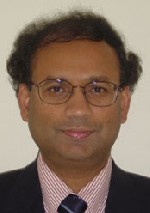 Rath Vannithamby received his BS, MS, and PhD degrees in EE from the University of Toronto, Canada. He is a senior research scientist in Intel Labs, USA responsible for 5G research. He is a recipient of Top Inventor award at Intel in 2015. Previously, he was a researcher at Ericsson, USA. He is a Senior Member of IEEE. He is an IEEE Communications Society Distinguished Lecturer for 2014-2017. He has published over 50 journal/conference papers and has over 200 patents granted/pending. He is an editor of a couple of books: (i) "Towards 5G: Applications, Requirements and Candidate Technologies" by Wiley and (ii) "Design and Deployment of Small Cell Networks" by Cambridge Press. He has also authored chapters of 3 books on 4G. He has given keynote speeches in IEEE GC’10 BWA workshop, IEEE APWiMob’14, IEEE IAICT’14, IEEE ISTT’14, IEEE ICIIS’15, ANDICOM'16 and WIoT'17. Dr. Vannithamby has been an associate editor for Journal of IEEE Communications Surveys and Tutorials since 2012, and he was an editor for IEEE Internet of Things Journal in the past. He was the lead-chair for workshops on (i) "5G Technologies" and (ii) "M2M Communications for IoT" in IEEE ICC 2014; and co-chair for "5G HetNets" workshop in GC'16, and "Main Trends in 5G Networks" workshop in ICC'17. He has given tutorials and hosted panels on 3G/4G/5G topics in numerous venues in IEEE conferences. He was a Guest Editor for EURASIP JWCN SI on RRM for 3G+ Systems. He was a TPC symposium co-chair for PIMRC'11. He is a member and the Standards Liaison for IEEE ComSoc Signal Processing and Communications Electronics Technical Committee (SPCE-TC). He has also served on TPC for IEEE ICC, GC, VTC, WCNC, and PIMRC. His research interests are in the area of 5G RAN, 5G IoT, ultra-dense networking, Autonomous Driving, and ICN. |
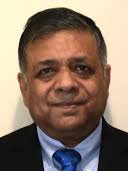 Amitabha (Amitava) Ghosh[F] (amitava.ghosh@nokia.com) is a Nokia Fellow and Head, Radio Interface Group at Nokia Bell Labs. He joined Motorola in 1990 after receiving his Ph.D in Electrical Engineering from Southern Methodist University, Dallas. Since joining Motorola he worked on multiple wireless technologies starting from IS-95, cdma-2000, 1xEV-DV/1XTREME, 1xEV-DO, UMTS, HSPA, 802.16e/WiMAX and 3GPP LTE. He has 60 issued patents, has written multiple book chapters and has authored numerous external and internal technical papers. He is currently working on 3GPP LTE-Advanced and 5G technologies. His research interests are in the area of digital communications, signal processing and wireless communications. He is the recipient of 2016 IEEE Stephen O. Rice and 2017 Neal Shephard prize, member of IEEE Access editorial board and co-author of the book titled "Essentials of LTE and LTE-A". |
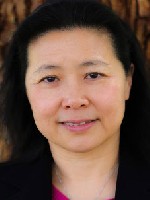 Jin Yang is a Fellow at Verizon Communications Inc., responsible for wireless technology and strategy. She is leading next generation wireless network architecture and technologies, including 5G NR, Evolved LTE, Internet of Things (IoT), Multi-access Edge Computing, network virtualization, and Self-Organizing Network. She has played a key role in the development and commercialization of 5G NR in 2019, LTE networks in 2010 and various CDMA networks since 1995 at Verizon, Vodafone and AirTouch Communications. |
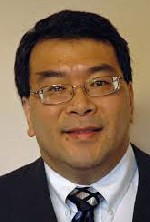 Anthony Soong works as Chief Scientist at Futurewei Technologies. |
 Wanshi Chen is Principal Engineer and Manager at Qualcomm Technologies, and serves as the Chair of the 3GPP RAN 1 Working Group. He has over 15 years of experience in telecommunications with leading telecom companies including operators, infrastructure vendors, and user equipment vendors. From 1996 to 1997 he worked at China Mobile focusing on wireless network installation, maintenance, field test and debugging, and performance characterization and optimization. From 2000 to 2006 he worked for Ericsson Wireless Communications, San Diego, and was responsible for 3GPP2 related system design, integration and performance optimization for commercial products, and 3GPP2 standardization. In May 2006 Wanshi Chen joined Qualcomm, San Diego, where, as one of the key team members, he has been contributing to the design, development and specification of LTE standardization through active participation in 3GPP RAN1. Wanshi Chen received his Ph.D. degree in electrical engineering from the University of Southern California, Los Angeles, CA, USA, and has been a 3GPP TSG RAN1 Vice Chairman since August 2013. |
14:00–15:30 (Kona Moku Salon B)
Opportunities and Challenges in Drones, HAPS and Non-terrestrial Networks
| Moderator: | Siva Subramani, Futurewei Technologies |
| Panelists: | Nicolas Chuberre, Thales Alenia |
| Stephen Hayes, Ericsson | |
| Shengli Fu, University of North Texas | |
| Ravi Pragada, Interdigital |
Summary—Technologies to provide cellular connectivity from High Altitude Platforms (HAPS) and Satellites are gaining momentum. Especially, with significant reduction in cost of satellite launch, entry of big players like Amazon, Google, Facebook etc. to provide connectivity from higher altitude are all very promising. However, the technical challenges, spectrum regulatory and ecosystem-related issues to take the aerial connectivity services to commercial level remain. Ongoing 3GPP study item on Non-terrestrial Networks explore the possibilities of 5G networks to support cellular connectivity from aerial platforms. In this panel session, we will look at the opportunities and technical challenges for the non-terrestrial connectivity. Providing cellular connectivity to drone as a terminal will also be briefly discussed. |
|
Biographies | |
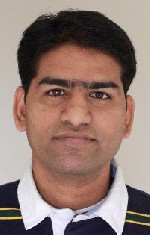 Siva Subramani is a Senior Standards Expert with Futurewei Technologies He is actively involved in 3GPP RAN standardization, particularly on 5G physical layer developments, LTE / LTE-A enhancements and features. He was with Vodafone Group as a Standards Strategy Manager with responsibility for Radio Access Network (RAN) standardization in 3GPP and developing features related to vertical industry. |
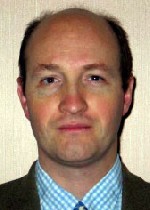 Nicolas Chuberre graduated from "Ecole Supérieure d’Ingénieur en Electronique et Electrotechnique" in Paris in 1988. Previously with Nokia & Alcatel Mobile phones to design signal processing algorithms, Medium Access Control protocols and integration test tools for 2G cellular handsets & systems, he joined Thales Alenia Space to manage the development of satellite payload equipment and the design of advanced Satellite Communication Systems (Geo stationary and constellation). Currently he is managing a project developing a Satellite Solution for 5G. He has successfully initiated and led several European projects in F6, FP7 and H2020 context. He has been chairing the SatCom Working Group of ISI and Networld2020 technology platforms (https://www.networld2020.eu/) during 9 years and as such was member of the partnership board of the 5G Infrastructure Association (http://5g-ppp.eu/). Nicolas has published several papers on innovative Satellite System concepts. Since 2006, he chairs Satellite Communication and Navigation working group at ETSI (https://www.etsi.org/). He is the lead representative of Thales in 3GPP TSG RAN where he leads the standardisation effort on satellite in 5G. |
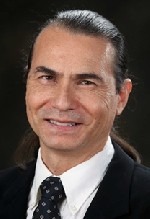 Stephen Hayes is the Director of Standards for Ericsson in North America. He has worked on various cellular issues over the last 20 years and been heavily involved in the evolution of the 3GPP family of technologies. His current focus includes the ATIS committees and 3GPP. He is also involved in several US advisory groups such as the FCC TAC (Technical Advisory Committee) where he chairs the subgroup on UAS spectrum issues. Stephen is currently the Vice-Chair of 3GPP TSG-RAN. Stephen was chairman of the 3GPP systems group (3GPP-SA) from 2006- 2011. Before that, Stephen was the chair of the Core Network group in 3GPP. Stephen is also the chair of the 3GPP group on working procedures. |
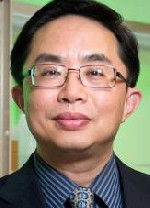 Prof. Shengli Fu received the B.S. and M.S. degrees in telecommunication engineering from the Beijing University of Posts and Telecommunications, Beijing, China, in 1994 and 1997, respectively, the M.S. degree in computer engineering from Wright State University, Dayton, OH, USA, in 2002, and the Ph.D. degree in electrical engineering from the University of Delaware, Newark, DE, USA, in 2005. |
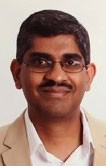 Ravi Pragada is a Principal Engineer at InterDigital Labs where he is currently research related to unmanned systems and related technologies. He has actively contributed to and held leadership positions in various next generation cellular system projects viz., millimeter wave air-interface design and development, device-to-device communications, millimeter wave backhaul and beyond 4G architectures. He also held engineering positions in product development including lead software architect for HSPA/UMTS and LTE protocol stack development projects covering handset and infrastructure products. He is a recipient of numerous innovation awards and Lucy Mahjobian distinguished publication award. Prior to InterDigital he has part of Motorola team (Arlington Heights, IL) that has developed RNC and NodeB infrastructure for 3GPP UMTS system. He received his M.S. in computer science and engineering from the State University of New York at Buffalo (1999) and B.E. from Andhra University, India. |
16:00–17:30 (Kona Moku Salon B)
AI for Autonomous Vehicles
| Moderator: | Gaurav Bansal, Airbus A3 Labs |
| Panelists: | Dinesh Bharadia, UCSD |
| Hongsheng Lu, Toyota Motor North America InfoTech Labs |
Summary—Artificial Intelligence plays a key role in design of autonomous vehicles. State-of-the-art techniques in deep learning are used to process sensor data (cameras, radars, lidars) for various stages in autonomous vehicles stack (perception, mapping, path-planning etc.). We will cover advantages and challenges of deploying AI solutions for autonomous vehicles. We will also discuss how cooperative data from neighboring vehicles, infrastructure and cloud could be used to make robust AI solutions for autonomous vehicles. |
|
Biographies | |
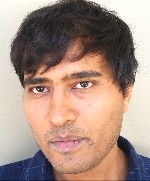 Gaurav Bansal is a Principal Engineer at the Airbus A3 Labs where he is currently leading initiatives in Artificial Intelligence to enable self-piloted aircraft operation and flying autonomous vehicles. Previously, Gaurav worked as a Principal Researcher at the Toyota InfoTechnology Center in Mountain View, CA, where he led several research efforts on the design of communication systems for Automated Driving. Gaurav is an expert in Vehicular Communications, pioneering contributions in Dedicated Short Range Communications (DSRC) congestion control and in innovative use-cases to leverage connectivity in vehicles. His research interests also include millimeter wave & full-duplex wireless communications. Gaurav represented Toyota in the Automakers’ Vehicle Safety Communication Consortium and in the SAE, ETSI standardization bodies. Gaurav's paper on DSRC Congestion Control received the Best Paper Award at IEEE WiVEC 2013. He also holds several patents in the field. Gaurav serves on the editorial board of IEEE Vehicular Technology Magazine and IEEE Connected Vehicles Initiative. Gaurav holds Electrical Engineering degrees from Indian Institute of Technology, Kanpur and The University of British Columbia. |
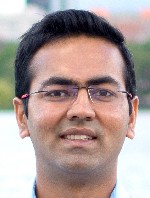 Dinesh Bharadia is faculty in ECE at the University of California San Diego. He received his Ph.D. from Stanford University in 2016 and was a Postdoctoral Associate at MIT. Specifically, in his dissertation, he built a prototype of a radio, that invalidated a long-held assumption in wireless is that radios cannot transmit and receive at the same time on the same frequency. From 2013 to 2015, he was a Principal Scientist for Kumu Networks, where he worked to commercialize his research on full-duplex radios, building a product that underwent successful field trials at Tier 1 network providers worldwide like Deutsche Telekom and SK Telecom. This product is currently under deployment. His research interests include advancing the theory and design of modern wireless communication systems, wireless imaging, sensor networks, and data-center networks. Recently, he has been actively involved in the design of cooperative autonomous systems, specifically in autonomous perception. In recognition of his work, Dinesh was named to Forbes 30 under 30 for the science category worldwide list. Dinesh was also named a Marconi Young Scholar for outstanding wireless research and awarded the Michael Dukakis Leadership award. He was also named as one of the top 35 Innovators under 35 in the world by MIT Technology Review in 2016. Dinesh is also the recipient of the Sarah and Thomas Kailath Stanford Graduate Fellowship. |
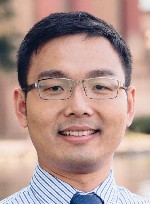 Hongsheng Lu is a Principal Researcher in Toyota Motor North America InfoTech Labs. He leads innovations on connected and automated vehicle, building solution to enable cooperative perception and V2X-assisted sensor fusion. He was recognized for contribution to DSRC congestion control and vehicle to pedestrian communications. He represents Toyota in standard development organizations and industry groups including SAE, ETSI and C2C-CC. Hongsheng Lu has a Ph.D degree from the University of Notre Dame (US). |

